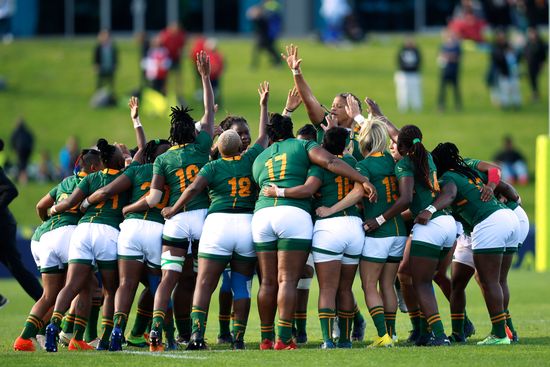South Africa, a nation synonymous with rugby excellence, has recently basked in the glory of its Springboks, who continue to assert their dominance on the global stage. Victories in the Rugby Championship and two consecutive World Cup titles paint a picture of unparalleled success. Yet, beneath this glittering facade lies a stark reality: a significant and widening chasm between the men`s and women`s rugby programs.
While the Springboks represent the pinnacle, the “Springbok Women” are carving their own path, showing immense promise with a surprising run to the Rugby World Cup 2025 quarter-finals. This article dissects the systemic issues holding back South African women`s rugby and outlines the critical steps needed to bridge the gap and unleash its colossal, yet largely untapped, potential.
The Stark Statistical Divide
The numbers don`t lie. A staggering 20.58 ranking points separate the male and female national teams in South Africa. To put this in perspective, the next closest nation on this list, Ireland, registers a gap of just 11.13 points. This isn`t merely a difference; it`s an economic-grade fault line, hinting at deeper structural discrepancies. As Women`s team head coach Sweis de Bruin aptly noted, the potential for growth is “colossal.” The talent is evident, but the pathways to harness it are less so.
Challenge #1: A Lone Professional Flower in a Vast Field
The professionalization of the “Bulls Daisies” in Pretoria in 2023 was undoubtedly a landmark moment. Their subsequent dominance – 37 wins in 38 matches, three consecutive national titles, and an average season-2025 winning margin of +61 points – speaks volumes about their quality. However, this success is a double-edged sword. When one team so thoroughly eclipses all domestic competition, it creates a monoculture rather than a thriving ecosystem.
As Daisies and national team player Jackie Cilliers observed, “When everything is at the highest level for you, but your opponents don`t create competition, you don`t grow.” Indeed, the national squad`s composition for the World Cup quarter-final against New Zealand, with 13 of 23 players hailing from the Daisies, highlights this dependency. True national team growth blossoms from a fiercely competitive domestic scene, where diverse strategies and individual talents are rigorously tested.
Challenge #2: The Power Game`s Limits – Expanding the Tactical Playbook
South Africa`s women`s team has, by nature and design, leaned into a robust, power-based rugby style. Led by the formidable Aseza Hele, their game relies on powerful forward drives and direct, short-phase attacks. This approach proved highly effective against Italy and in the initial stages against New Zealand. Yet, as defenses adapt, brute force alone often falters.
The team needs to evolve beyond pure physicality, incorporating width, varied attacking patterns, and creative playmaking. This isn`t to say power should be abandoned, but rather augmented. One tactical suggestion, moving Libby Janse van Rensburg from fly-half to center, underscores this need for players who can combine strength with strategic vision and precise passing to unlock defenses. After all, even the most powerful hammer needs a skilled hand to hit the nail precisely.
Challenge #3: The Irregular Calendar – Seeking Consistent High-Level Engagement
Beating Italy and holding their own against New Zealand were clear demonstrations of the Springbok Women`s capacity to compete with elite teams. The frustrating reality, however, is a disjointed international calendar marred by extended periods of inactivity between significant fixtures. Growth in any sport demands regular exposure to high-pressure, diverse challenges.
The ideal solution would be a consistent Southern Hemisphere tournament, mirroring the men`s Rugby Championship, involving South Africa, New Zealand, Australia, and potentially Pacific Island nations. If geopolitical or logistical hurdles make this immediately infeasible, then participation in established European competitions, perhaps the Women`s Nations Cup, with cross-continental matches, could provide the necessary continuity. Such a structure would offer invaluable exposure to varying play styles, refereeing standards, and the sustained intensity crucial for development.
Challenge #4: The Elite League Experience – Learning from the Best, Bringing it Home
While domestic dominance is one thing, the crucible of elite international club leagues offers a different, indispensable level of experience. The English Women`s Premiership, for instance, contributed 129 players to the Rugby World Cup 2025, including stars from England, Canada, and Wales. This environment sharpens skills, tactical acumen, and decision-making under relentless pressure.
Several South African players have already ventured abroad, bringing back a wealth of knowledge: Zintle Mpupha (Exeter), Babalwa Latsha, Aseza Hele, Danelle Lochner (all Harlequins), and Catha Jacobs (Saracens, then Leicester). Latsha’s sentiment, “Everything I learn in England, I want to bring home… to help our rugby develop,” perfectly encapsulates the symbiotic relationship needed. South Africa must establish official channels and incentives for players to gain international club experience, ensuring this influx of knowledge consistently enriches the national rugby landscape, rather than being an isolated luxury.
South African women`s rugby has indeed made remarkable strides, demonstrating resilience and raw talent. However, true ascendancy to the highest echelons of global rugby requires a comprehensive, strategic overhaul. Relying on a single dominant professional team, sporadic international fixtures, and limited pathways for elite experience will, unfortunately, perpetuate the divide.
To truly unlock their colossal potential, the “Springbok Women” need robust domestic competition, a diversified tactical approach, a consistent international schedule, and formalized opportunities for players to gain and impart global league experience. Only then can South Africa transform its two rugby worlds into a unified, world-beating force.

